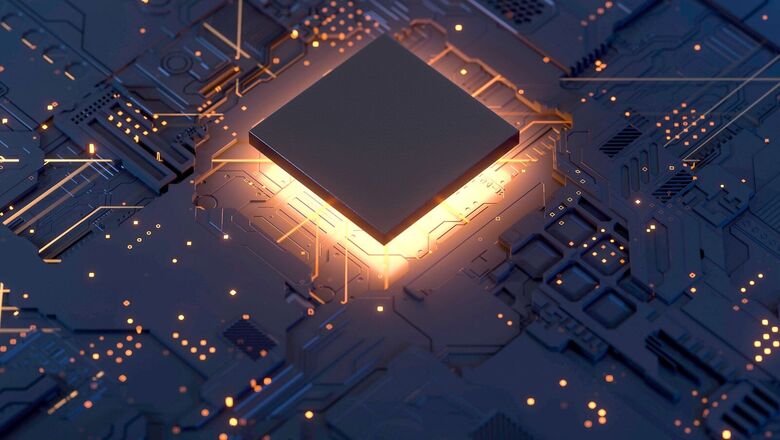
views
In a joint study by the India Electronics & Semiconductor Association (IESA) and Counterpoint Research, it was found that the cumulative revenue of India’s semiconductor component market will reach $300 billion between 2021 and 2026.
As per the report, titled ‘India Semiconductor Market Report, 2019-2026’, the country is on track to become the world’s second-largest market in terms of scale and growing demand for semiconductor components across a variety of industries and applications.
The research focuses on the bottom-up modelling unit as well as revenue demand for semiconductor components covering the entire Bill of Materials (BoM) of multiple end-device and equipment categories across seven major sectors in India from both domestic and export perspectives.
The sectors mentioned in this case include Mobile and Wearables, Information Technology, Automotive, Industrial, Telecom, Aerospace and Defense, and Consumer Electronics.
The report also includes detailed recommendations, potential policies, and a framework for developing a strong domestic semiconductor ecosystem in order to boost domestic production and sourcing.
What data shows
As per the data highlighted in this report, about 80% of total semiconductor component revenues come from IT (20%), industrial (9%), as well as mobile and wearables (51%).
Apart from these, consumer electronics account for 7% of the revenues, followed by telecon (5%), automotive (5%), and aerospace & defence (3%).
The report also noted that while the country is becoming one of the largest consumers of electronic and semiconductor components, the majority of components are imported, providing the country with limited economic opportunities.
The data showed that only 9% of this semiconductor requirement is currently met locally.
However, the report further stated: “Government’s vision under ‘Make in India’, ‘Atmanirbhar Bharat’, and ‘PLI scheme’ along with its constant pursuit towards reviving the infrastructure through the adoption of digital technology will boost local manufacturing of semiconductor components.”
The researchers are expecting that in terms of locally sourced semiconductor components by segments, in the mobile & wearable section, the percentage was 4% in 2021 but it is expected to be 9% by 2026. Similarly, the report pointed out a significant jump in all the sections.
IESA CEO and president K Krishna Moorthy said, “Before the end of this decade, there will be nothing that will not be touched by electronics and the ubiquitous ‘chip’. Be it fighting carbon emissions, renewable energy, food safety, or healthcare, the semiconductor chip will be all-pervasive. Imagine this – all children all over India get educated in virtual classrooms by the country’s best teachers. The chip makes it possible.”
Furthermore, research director at Counterpoint Research Tarun Pathak said that with the gradual transition from feature phones to smartphones, the proportions of advanced logic processors, memory, integrated controllers, sensors, and other components have increased.
According to him: “This will continue to drive the value of the semiconductor content in smartphones, which is still an under-penetrated segment in India, aided by the rise of wearables such as smartwatch and TWS.”
India’s semiconductor future
The research report noted that in terms of revenue, India’s end equipment market was worth $119 billion in 2021, and, from 2021 to 2026, it is expected to grow at a 19% CAGR.
From component sourcing to design manufacturing, India’s Electronic System Design and Manufacturing (ESDM) sector is expected to play a significant role in the country’s overall growth, according to the researchers.
Additionally, the report said that the Indian semiconductor industry is poised for rapid expansion in the coming years, assisting India’s economy in reaching the next level in terms of both domestic consumption and exports.
It also noted that while local production is currently low, India has enormous potential to become a leading semiconductor component supplier in the coming years if talent and resources are properly utilised.
The study also highlighted that if there is an increase in local manufacturing and sourcing of semiconductor components, “the semiconductor market can be a major contributor to economic growth, and India’s push to become a $5-trillion economy”.
Regarding the latest report, Eswara Rao Nandam, president & director of Polymatech Electronics Private Limited told News18 that $300 Billion is estimated as per current usage but according to him it would cross that mark.
Similarly, Sanjay Gupta, India vice president and managing director at NXP Semiconductors, believes that with the increasing focus on digitalisation, the demand for semiconductors is bound to grow multi-fold.
But there are concerns regarding India’s vision to become a global semiconductor hub—especially when it will be up against the chip giants, China and Taiwan.
In this case, while citing Prime Minister Narendra Modi’s Independence Day speech about the country’s ‘techade’ vision to become a global manufacturing hub, Gupta said: “It is evident that the Indian semiconductor industry is in the nascent stage however the efforts to become a global manufacturing hub is quite visible with the government’s flagship vision such as ‘Digital India’ and the ‘Make in India’ programme. With such rigorous efforts and focus on skill development, infrastructure, etc, the day is not far away that the country will witness a paradigm shift from being a ‘chip taker to a chip maker’.”
As per Nandam, Polymatech believes that India will be in the “driver’s seat” in the semiconductor industry by 2035.
He also highlighted the fact that the central and state governments’ strong commitment and support will be critical.
The industry leader said: “Polymatech (particularly) will produce fab latest by 2024 in stages of backward integration.”
While explaining further he said that traditional fab manufacturing, which uses a lot of water, could be discouraged as this takes up a lot of space, pollutes a lot of water, and depletes a lot of natural resources.
Nandam said: “Polymatech is adopting latest technology like dicing with plasma/laser which requires very minimal to zero amount of water and also adopting Industry 4.0 theme for the highest quality of products.”
He also said that a proper and speedy subsidy disbursal mechanism at smaller intervals will attract promoters to invest in this business. According to him: “Listing of semiconductor companies can be on a fast track may also help the industry to grow faster as it needs huge Capex.”
Lastly, Nandam suggested that India needs to invite semicon machinery manufacturers because according to him there are few companies producing these machines and the lead time is approximately 180 -270 days plus sailing time.
News18 also reached out to Vivek Tyagi, who is the chairman of IESA. While citing concerns related to the geopolitical situation in East Asia, he said that chip manufacturing capacity may be strained in the future.
“Apropos, it is a natural consequence that entities involved in the raw materials and corresponding supply chains are likely to move to locations, which offer better facilities and policies,” he said.
So Tyagi believes that self-sufficiency and indigenous semiconductor manufacturing are essential requirements in light of this crisis, and the Indian government is working to meet them.
Furthermore, he said: “While in the present disposition, there are a handful of countries having the capacities to set up new semiconductor fabs, various policies offering production-linked incentives, design-linked incentives, setting up of Indian Semiconductor Mission, reorganisation of SCL, the promulgation of state policies, etc, will accrue semiconductor manufacturing in addition to design. The setting up of Fab facilities is capital intensive and complex. A robust R&D along with an emphasis on skill development will be the cornerstones of this endeavour. It is a daunting task ahead but it is a work in progress.”
Read the Latest News and Breaking News here


















Comments
0 comment